Today’s entry is going to be a little long… but it’ll include a little contest, so read on 🙂
It was a nice day in Taipei today. The weather’s gotten a bit cooler, with drier air blowing in from the north. I figured I haven’t gone tea shopping for quite a while, and it’s time to explore some more.
Instead of going to the posh and nice Yongkang area, I went a section of old Taipei where it’s said there are a number of older tea stores. I only have the address of one, the Youji. I should note here that “X-ji” is a typical way of naming a store back in the day. It’s function is sort of like the English usage of the “‘s” in “xxxx’s”. So…. lots of these older stores have names like this. The Hong Kong tea store, “Ying Kee”, is actually “Yingji” in pinyin. There are other famous establishments in Hong Kong that also have such names.
Anyway, that was a digression. I got off the subway at Shuanglian station and started walking towards Chongqing N. Rd, where, I’m told, some of these older stores are. I passed by a store that sells both incense and puerh — an odd combo, seeing the incense will probably infect every cake they sell. It consisted of mostly cooked cakes, fake Dayi, and wet stored stuff of questionable provenance. I passed, and kept walking. I eventually ended up near the Youji store, and in front of it, there’s a park
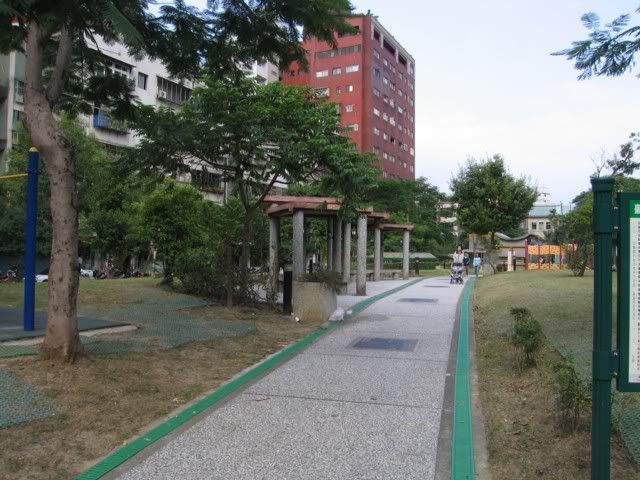
But this isn’t an ordinary park, because it tells you about how Taiwanese tea is made!
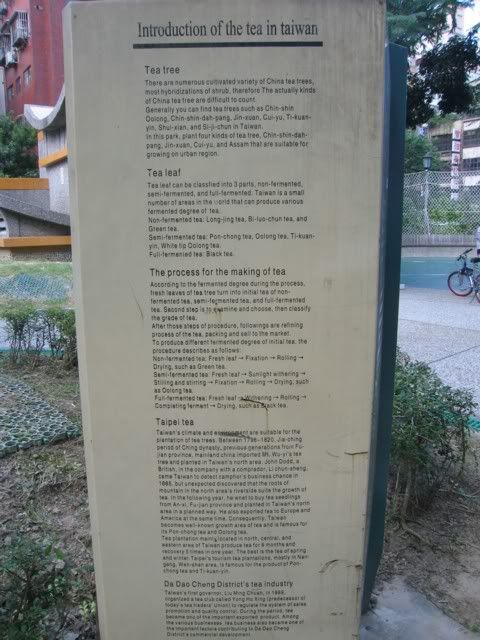
It has educational routes you can walk along this park that measures something like 40m by 15m
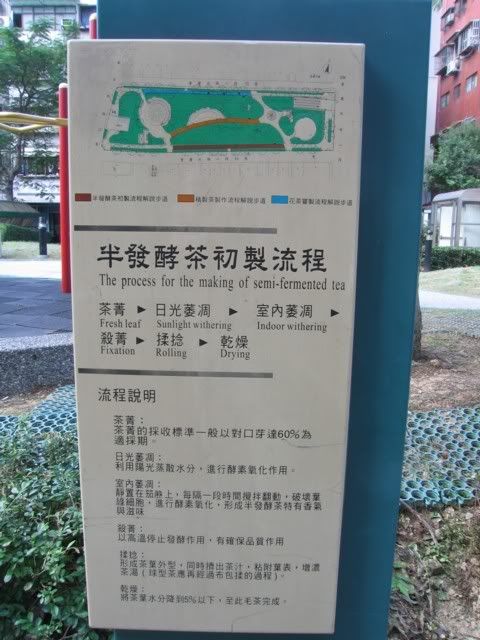
With relief carvings set in the ground of the processes in question

It’s kinda cute.
On one side of the park is the store for Youji
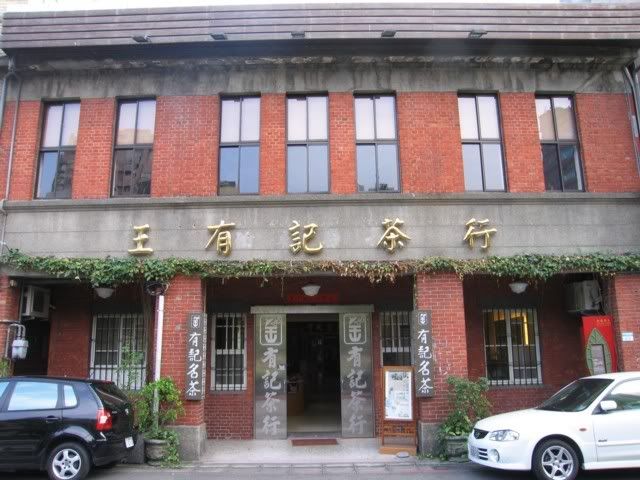
It actually says “Wang Youji Chahang”, but it seems like they just refer to themselves as Youji. The building is actually quite big. The front end of the ground floor is a store — you can sort of see from the picture above that it is somewhat renovated and newish looking (more pictures on their rather weird website). The back half though is their factory — where they process the teas. They do their own roasting, packaging, and what not. Business is obviously not as good as way back in the heyday of Taiwanese tea export, in their case perhaps dating back to the pre-1945 colonial period, but nonetheless… business goes on.
I tried two teas there — an aged baozhong that is a bit sour, and a roasted tieguanyin that is quite reasonable. I liked them both, although the aged baozhong needs to be finished relatively quickly or it can get too sour. I think it’s time they re-roast that one again.
After trying the teas though, I asked for a tour of the premises, which they apparently do. So…. through the door in the middle of the building and into the back we went.
The first thing you see when you walk through the door is this
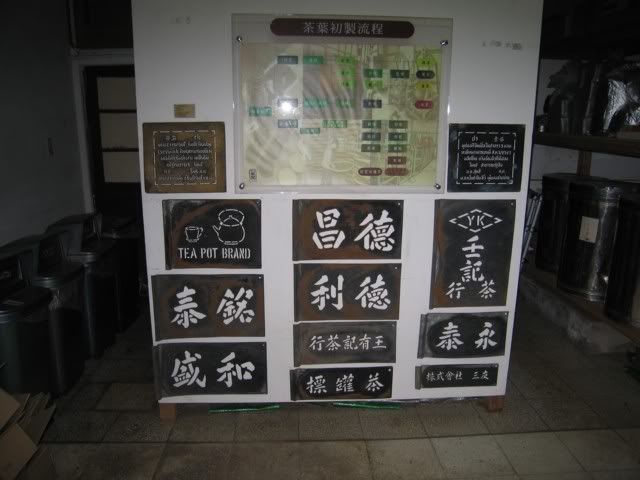
These are the templates they used for the boxes that they packed the tea in — you paint over them so the words are painted onto the boxes. These are various brand names, from the “Tea Pot Brand” to the “Mitomo Kabushikigaisha” (Three Friends Corporation, bottom right, probably dating from the colonial period). Then, there are a bunch of machines — used for sorting, drying, etc, but nothing too exciting, and none were in action today. The more interesting stuff is the roasting room.
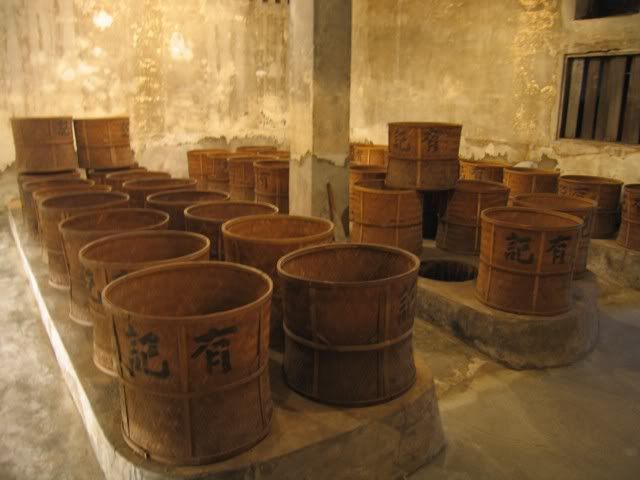
I’ve seen these individually before, but not in a room like this and certainly not this many at once. Since I think many tea makers these days are using electric roasters (I’m guessing they’re more consistent, less room for error, and probably more economical), this is going to be an increasingly rare sight. These pits are like this
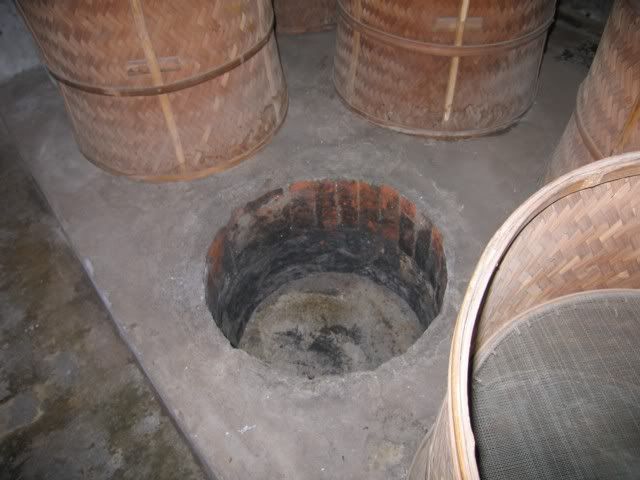
They fill them with big pieces of charcoal
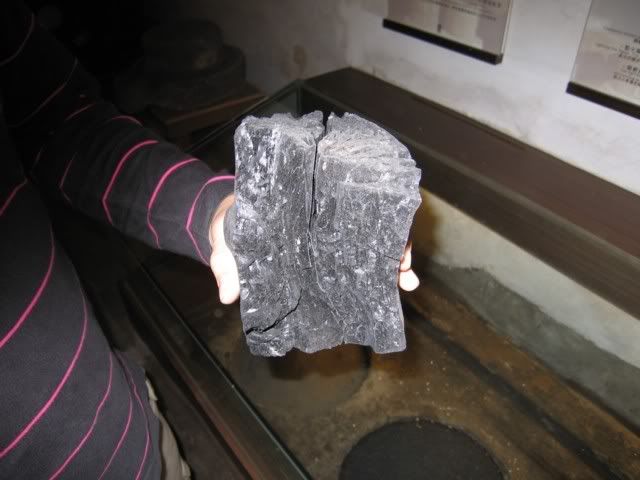
Then they ground them down
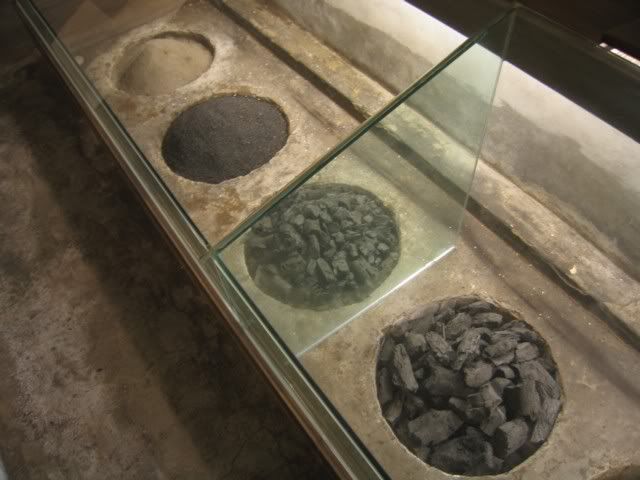
Using these tools (specifically the right-most long stick)
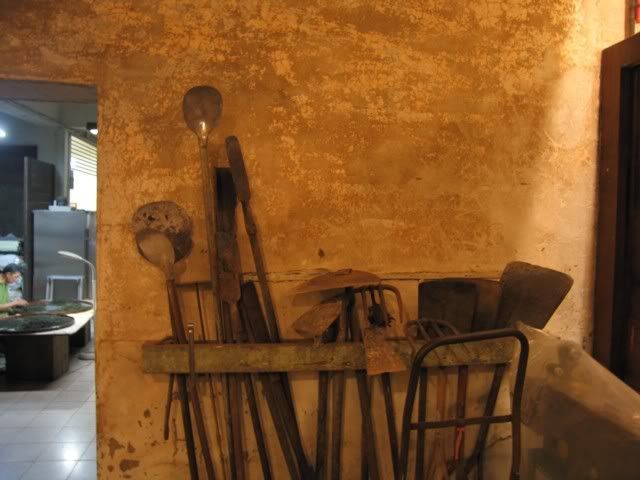
Then you cover the pit with what he said are something like burned grain husk
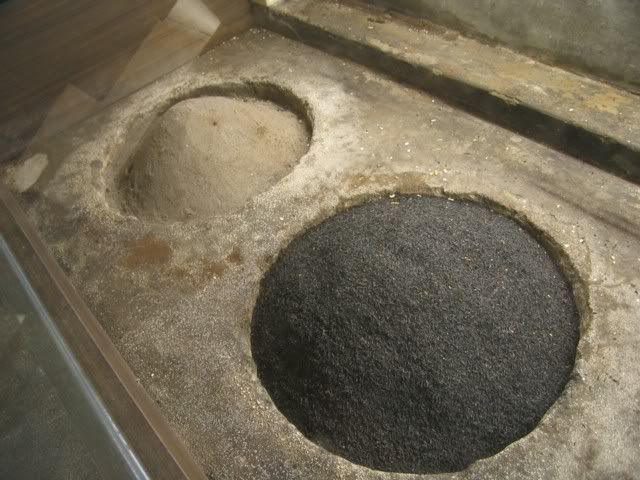
When these burn down, they become the powder you see on the left of the picture. This covers the fire so that you are not directly burning the tea. I always knew you cover the charcoal with a dust like thing. I always thought that’s used charcoal that’s disintegrated into powder. This grain husk thing is new to me.
Then…. you roast the tea for hours….
You can also see other things going on, like in the picture of the tools — look on the left, and you see a guy picking leaves. He’s sorting the tea, presumably readying it for sale, or roasting, I’m not sure. I had a good conversation with the guy, who is running the family business. He said it’s really hard these days to find young people who want to do this, especially the roasting part. It’s just not pleasant work (high temperature, having to deal with charcoal, leaves, etc) and nobody is interested. Why do it when you can sell non-roasted tea for the same price, or even more? They insist on it, and even lightly roast their baozhongs, but that doesn’t always happen anymore. I can’t agree more — this is something that, I think, needs to be preserved because I personally feel a lot of these teas can’t be drunk without ill effects for one’s health without some roasting. (Sidenote: this is also why I don’t drink a lot of the really green Taiwan oolong these days, in answer to Julian’s question a week ago)
I picked up a little tea, and plan to be back here for more. I walked out, and wandered around a little more. I couldn’t find more tea shops… they are hidden somehow. Some of the stores are closed. This part of Taipei is no longer important, economically — the center of action has moved eastward, leaving this area behind. There are some older stores here, definitely, but they are only dealing with locals, and not the big exporters they once were. So it is somewhat fitting that there were some antique shops around here that look rather run down. One, though, sells some teapots…. so I went in for a look. He had about 20 of them on display, which was all he had. They were of various levels of authenticity and craftsmanship. One, though, caught my eye, and I eventually came home with it.
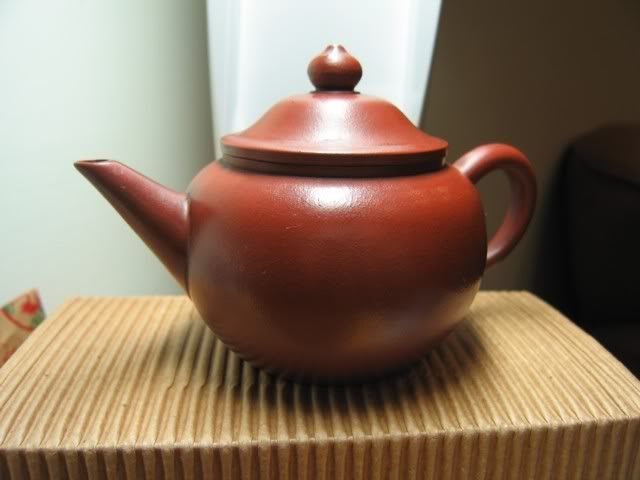
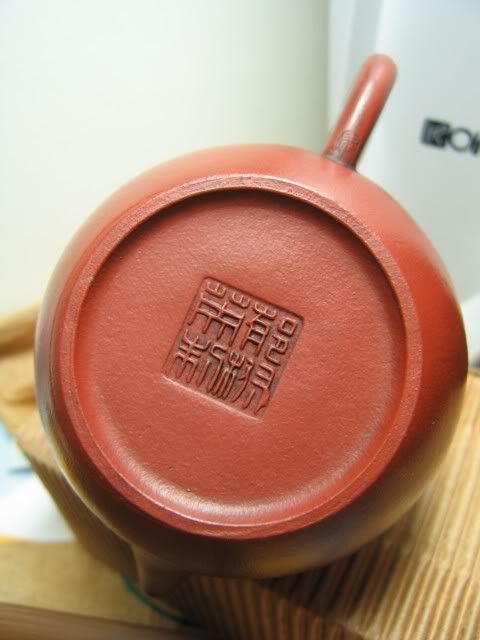
It pours well, the lid is well fitted, the patina is very nice and it felt good enough for me to buy it despite its funny smell inside. I tried brewing some of the cheap aged oolongs in it to get rid of the smell, and it seemed to have worked. I’m going to let it sit around some more and see if the odd smell comes back (probably because of where it was stored for a while). We’ll see what happens.
>
Which gets us to the contest part:
In trying to make this blog a little more interactive (I have a, relatively speaking, very quiet set of readers), let’s play The Price is Right. Submit your guesses to me via email regarding how much this teapot cost me. The person who comes closest (either high or low is fine, in deviation of the rules of the gameshow) will get samples of all the aged oolongs I tasted the last week, good and bad. If there’s a tie (say, one person guessed 1.1 and the other 0.9) the lower one wins.
Please submit guesses to (my username) at gmail. Please quote the prices in Taiwan Dollars (currently about 32 NTD for 1 USD). I am going to announce the answer on the 23rd when I blog. You have lots of time to ponder 🙂



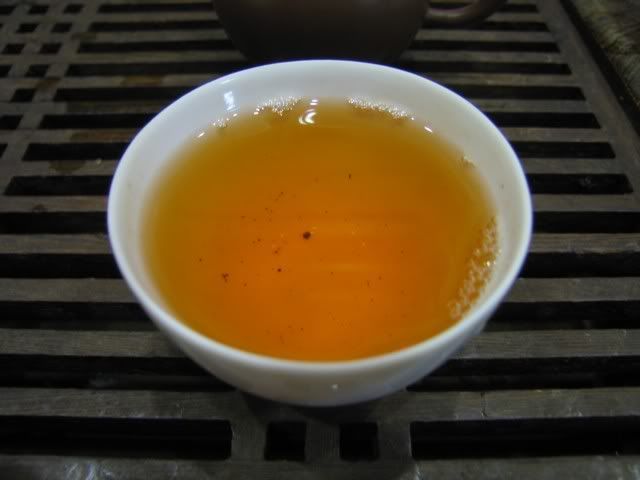

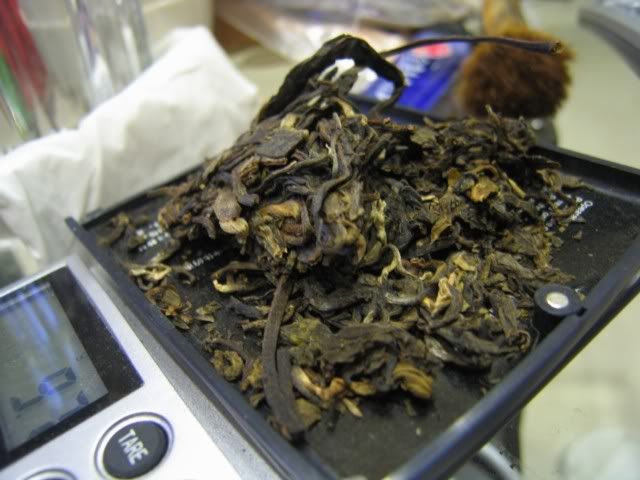
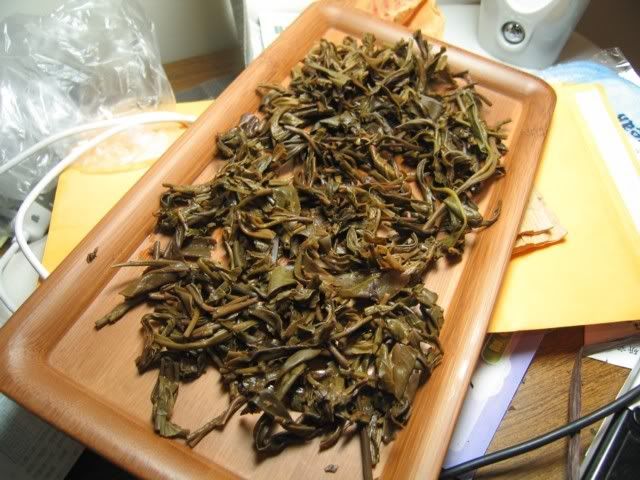

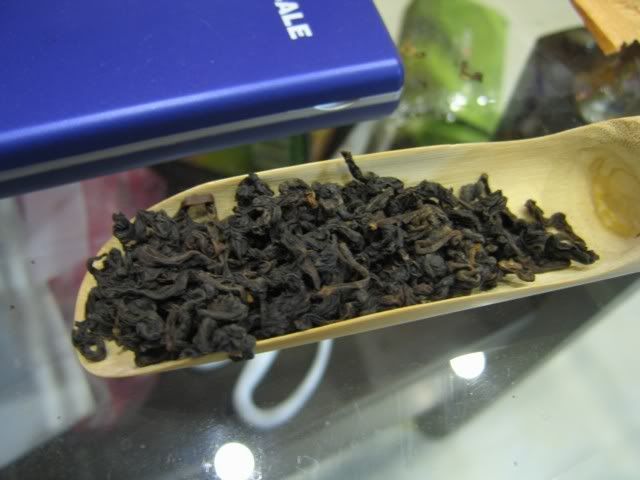


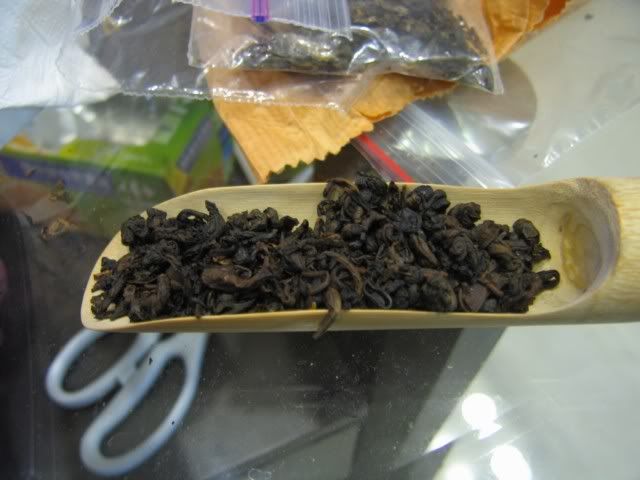
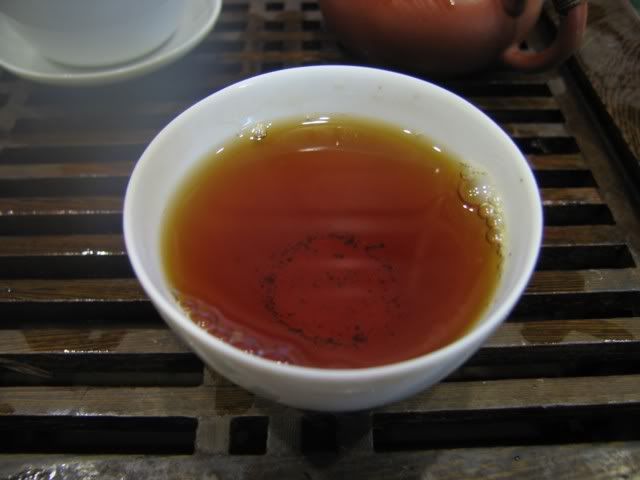
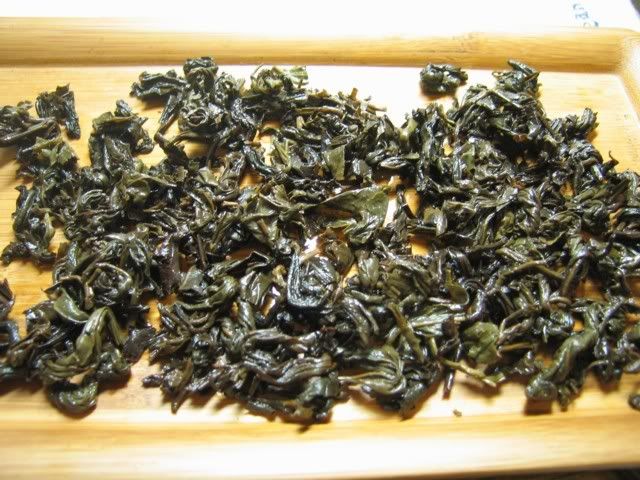
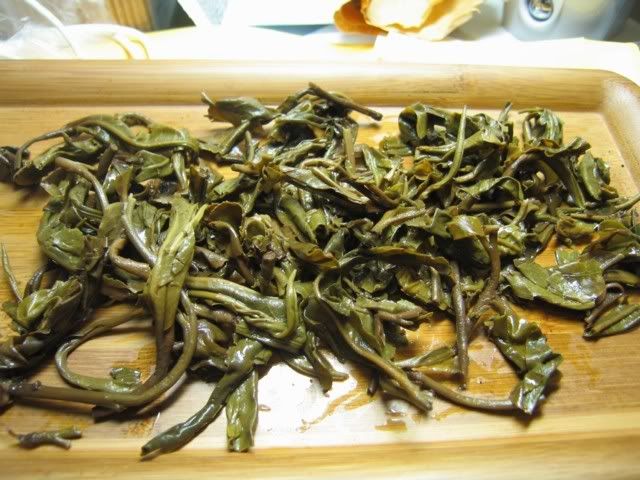
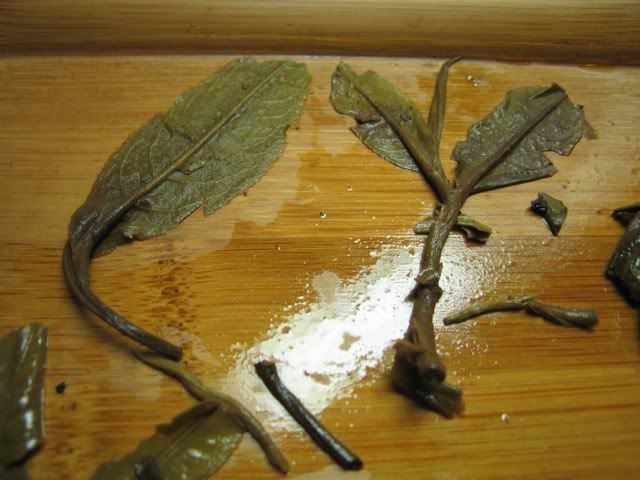




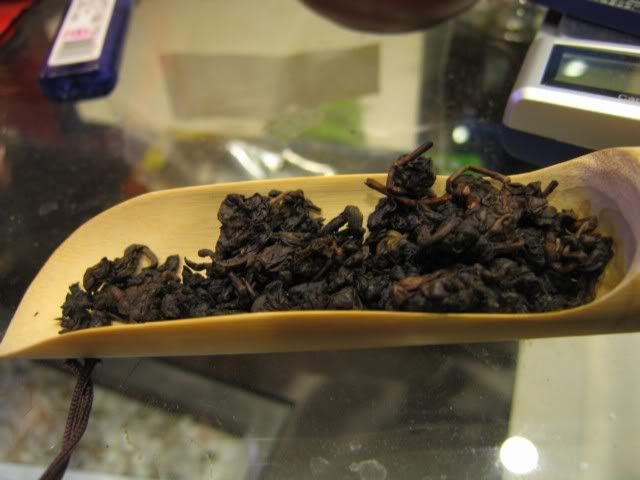
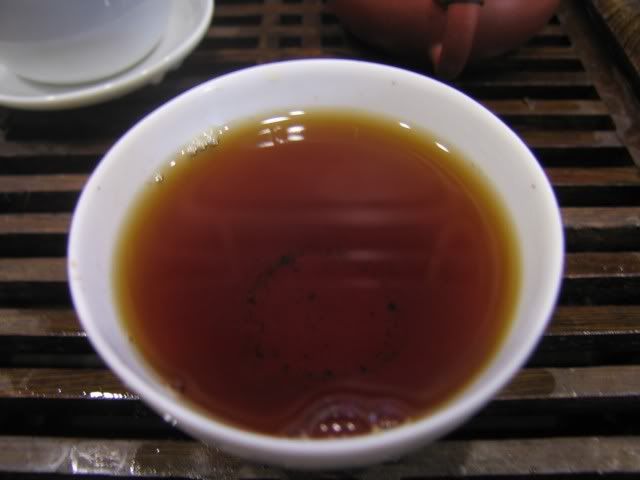
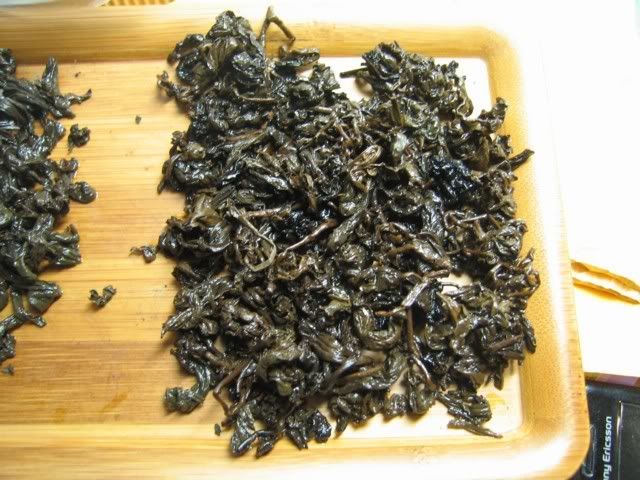
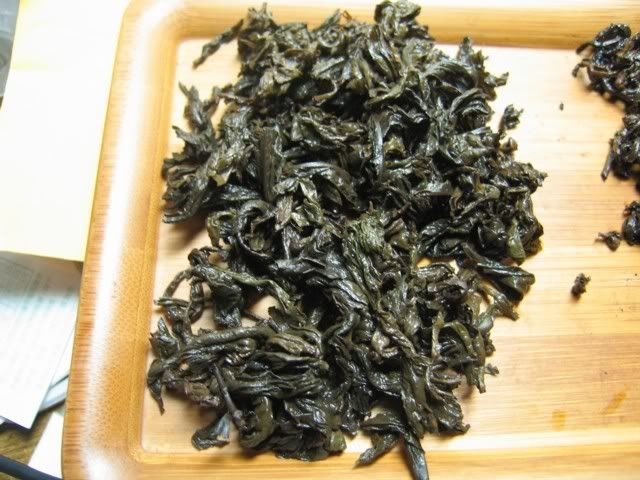
 RSS - Posts
RSS - Posts
I took you at your suggestion and have been reading some of your old post-Covid posts. I haven’t been to…